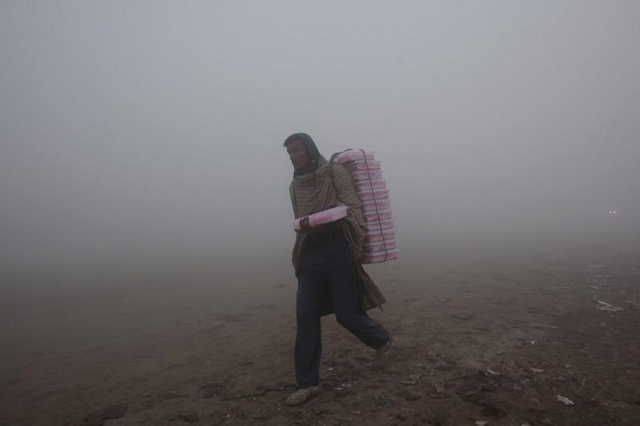
“People are not complaining about the shortness of breath, stinging eyes, and nausea from thick, acrid smog that has haunted the city for so long,” said a senior pulmonologist.
For several years in the row, the hazardous pollutants across the provincial capital’s skyline have caused residents respiratory difficulties, eye irritation, and cardiac complications, among other ailments. The government, according to environmental experts, has been helpless in reducing pollution in the city. “Lahore is certainly competing with India’s capital for the distinction of the world’s most polluted city. Pollution levels are down, temporarily due to the lockdown in the city,” said one environmental expert.
According to the data collected by the Express Tribune, the city’s AQI has improved significantly since the government has limited activity. Over the past 48 hours, the AQI readings have varied between 18-65 which experts say is way below the hazardous range Lahore has crossed several times in the past. During the summer, the city routinely crosses the pollution red line, with AQI readings higher than 300, which is very unhealthy, and in most cases, hazardous for humans.
Dotted with factories that emit toxic fumes, Lahore also suffers due to vehicular diesel fuel that frequently sends air pollution levels skyrocketing like clockwork. Commenting on the situation, Director Department of Environment, Mohammad Naseem, credited the lockdown for the improvement in the AQI. “The air quality has improved because of the limited human activity in the provincial capital,” said Naseem.
He blamed the emission of toxic fumes from vehicles for 43% of the pollution in the city. Rapid industrialisation, tree slashing, and increased crop burning and coal plant emissions from neighbouring India, according to experts, were other factors contributing to the elevated levels of pollution in the second-largest city in Pakistan, which is home to more than 11 million people.
The environment remains one of the most important issues on Prime Minister Imran Khan’s agenda. On his orders, the city recently conducted a survey to determine the sources that contribute to the pollution levels.
According to the World Health Organisation (WHO), in 2015, almost 60,000 Pakistanis died from a high level of fine particulate matter in the air, making it the highest death tolls in the world from air pollution.
Solutions to address curb the rising air pollution are slowly emerging. Prime Minister Imran Khan’s administration has unveiled a large-scale tree plantation programme.
While residents have every reason to breathe a sigh of relief, without drastic interventions, experts predict that Lahore’s air pollution may worsen in the coming years.
Published in The Express Tribune, March 30th, 2020.

































COMMENTS
Comments are moderated and generally will be posted if they are on-topic and not abusive.
For more information, please see our Comments FAQ